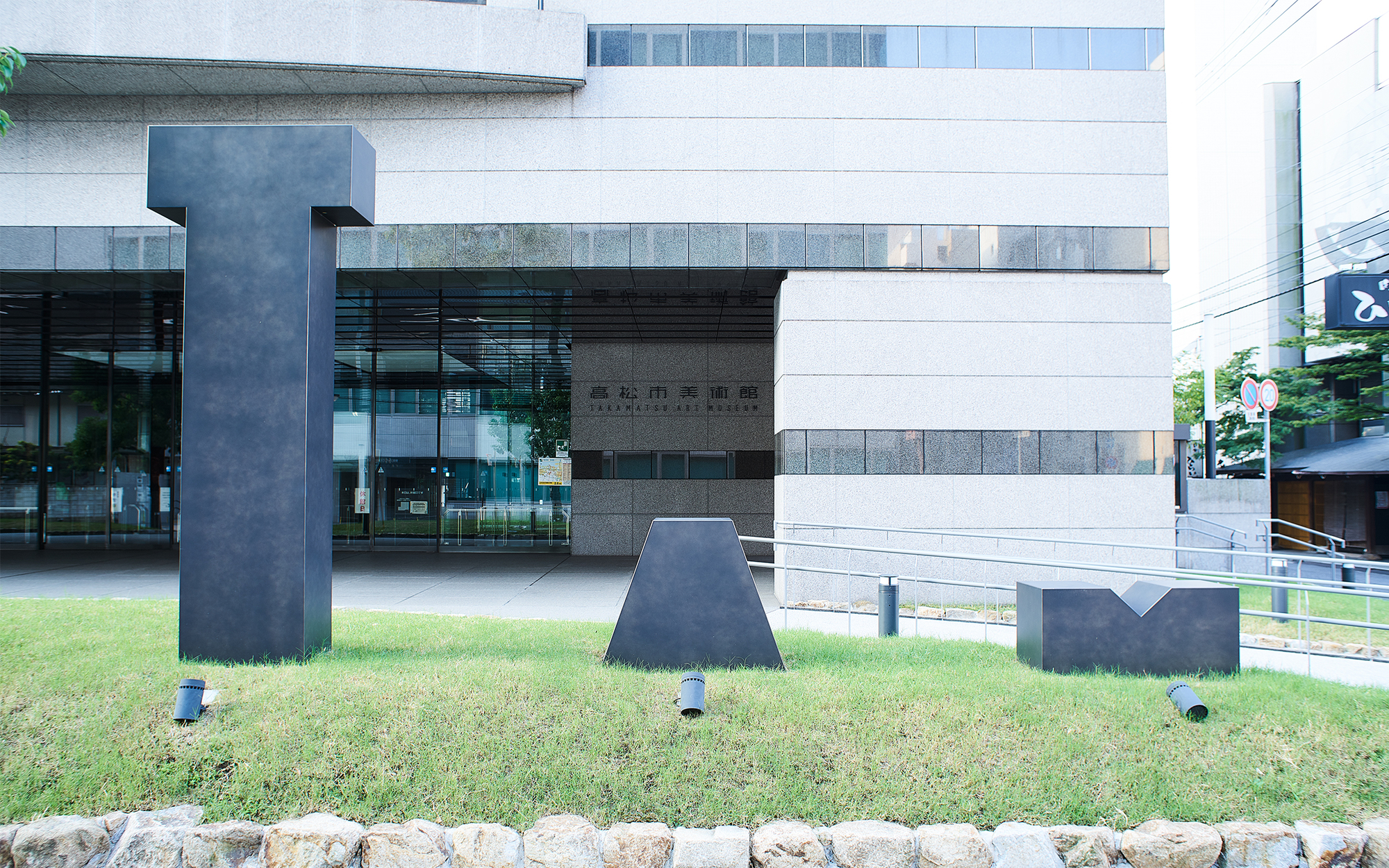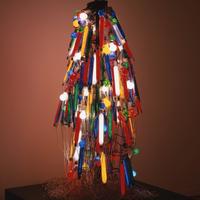More about Takamatsu Art Museum
Works at Takamatsu Art Museum

Contributor
Kagawa Prefecture, home of Takamatsu Art Museum, is "too famous," on account of its delicious udon noodles, writes a local blogger.
The local variety of udon, Sanuki udon, takes its name from the former name of the prefecture, and has become so popular that you can find it lots of places outside Kagawa. You'll get some generous whiffs of the unmistakable smell of the broth from one of the prefecture's ~700 udon joints as you walk the fifteen minutes from Takamatsu Station to the museum, in Konyacho, the heart of the prefecture's capital city of Takamatsu.
In 1949, at its grand opening, the Takamatsu Art Museum became the first public museum in the famous Ritsurin garden. At that time, the nation was still under the eye of its military occupiers from the U.S., so the museum was an important way of building morale. Three years later, the U.S. lifted the occupation, and the region continued its rebuilding process. For hundreds of years, Takamatsu has played a key role in the trade routes of the area, as it is situated on the site of a major port. However, in 1955, residents realized that they needed to improve local transportation in the wake of a catastrophic boat accident off the coast of Takamatsu, caused by dense fog. Their vision would not be realized for thirty-three more years, as contractors engaged in the lengthy and dangerous process of building a bridge complex connecting five islands in the Seto Inland Sea. In 1988, after exacting a considerable cost, the Great Seto Bridge opened, linking Kagawa and Okayama prefectures. In conjunction, the prefecture moved the Takamatsu Art Museum to its current location, near the central shopping district, and constructed a new seven-floor building for it.
The Museum's permanent collections include post-war Japanese contemporary art, traditional art, local Sanuki lacquer and metalwork, and 20th century international art. As of 2020, the price of admission for permanent exhibitions is ¥200 for adults (USD $1.88), ¥150 for university students (USD $1.41), and free of charge for people of high school age and younger, as well as for ages 65 and up.
In 1956, the first woman conceptual artist, the late Tanaka Atsuko, debuted her groundbreaking work Electric Dress at Takamatsu Art Museum, charging the atmosphere by wearing about one hundred painted tubes and eighty light bulbs, which she had programmed to blink on and off every 150 seconds, whose wiring and bulbs covered her entire body, including her head. It was a fantastic idea, and Tanaka had to mobilize some amazing engineering skills to finish it, but when she finally put it on, with nothing visible except her face and hands, she saw that it was a hazardous endeavor. All of a sudden, she said, it reminded her of a prisoner on death row. To their credit, the Takamatsu Art Museum was able to summon enough power for all those bulbs without blowing a circuit, and Tanaka made it out of the dress without getting roasted.
Sources
- "【ジョーク】さすがうどん県!香川で野生のうどんが発見される【創作アート】." Fundo, May 28, 2018, https://fundo.jp/193530.
- "【香川】高松でアートを楽しむ!おすすめの美術館&博物館5選." Travel Book, https://www.travelbook.co.jp/topic/2813.
- "高松市美術館について." Takamatsu Art Museum, http://www.city.takamatsu.kagawa.jp/museum/takamatsu/gaiyou/about.html.
- Gómez, Edward. "Atsuko Tanaka: Painting the Body Electric." Modern Painters (Apr. 2005): 81-82.
- "高松市美術館." BTCompany, https://bijutsutecho.com/museums-galleries/203.
- "高松市美術館." Setouichi Museum Network, https://www.jb-honshi.co.jp/museum/museum/kagawa/takamatsu.html.
- "うどん県何やってんの...香川県が極秘飼育していたポケモン「ヤドン」800匹に逃げられる." j-town.net, Apr. 1, 2015, https://j-town.net/kagawa/column/gotochicolumn/203057.html?p=all.
Featured Content
Here is what Wikipedia says about Takamatsu Art Museum
The Takamatsu Art Museum (高松市美術館, Takamatsu-shi Bijutsukan) opened in Takamatsu, Kagawa Prefecture, Japan, in 1988. The collection, totalling over 1,700 works, has three principal strands: post-war Japanese art, modern and contemporary world art, and the arts and crafts of Kagawa Prefecture. The Museum's predecessor institution, Takamatsu Bijutsukan (高松美術館), opened in Ritsurin Garden in 1949.
Check out the full Wikipedia article about Takamatsu Art Museum











